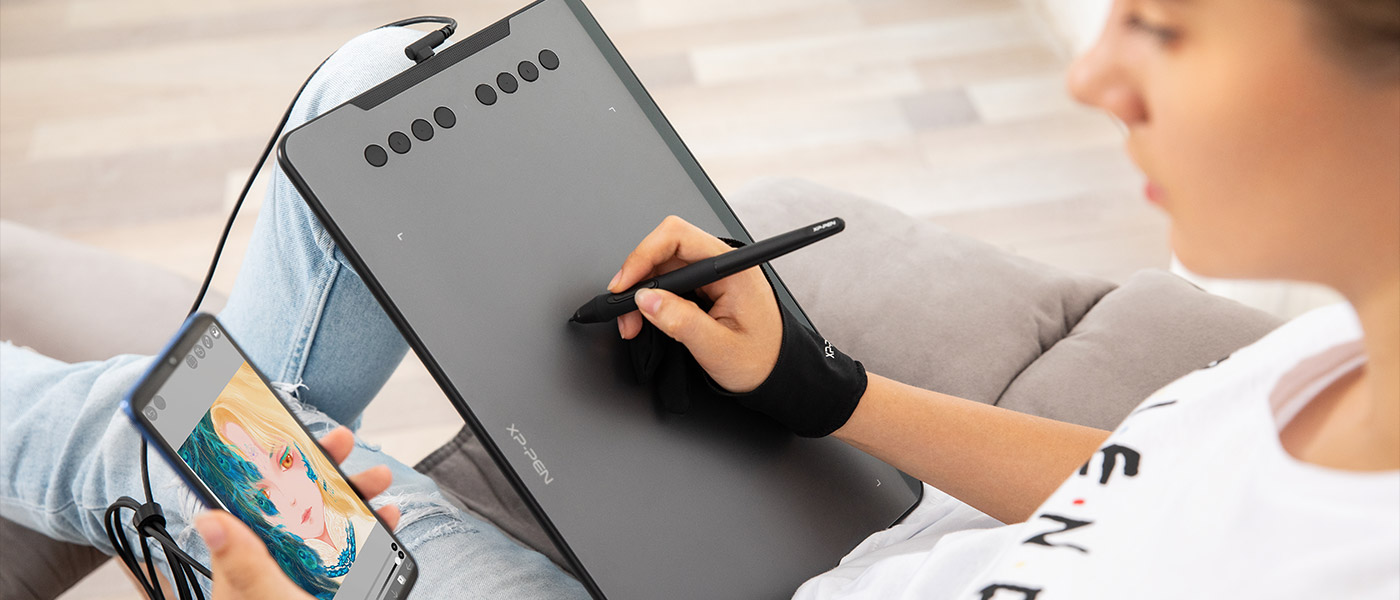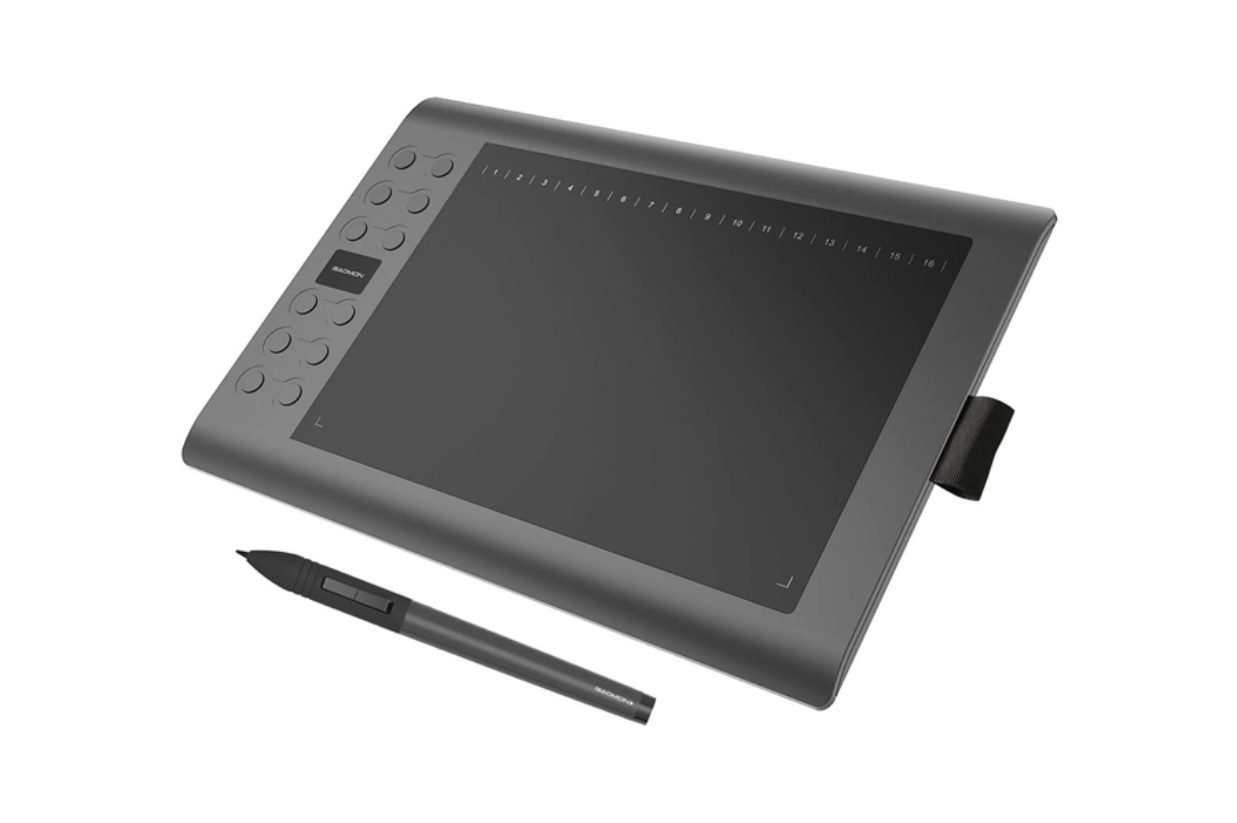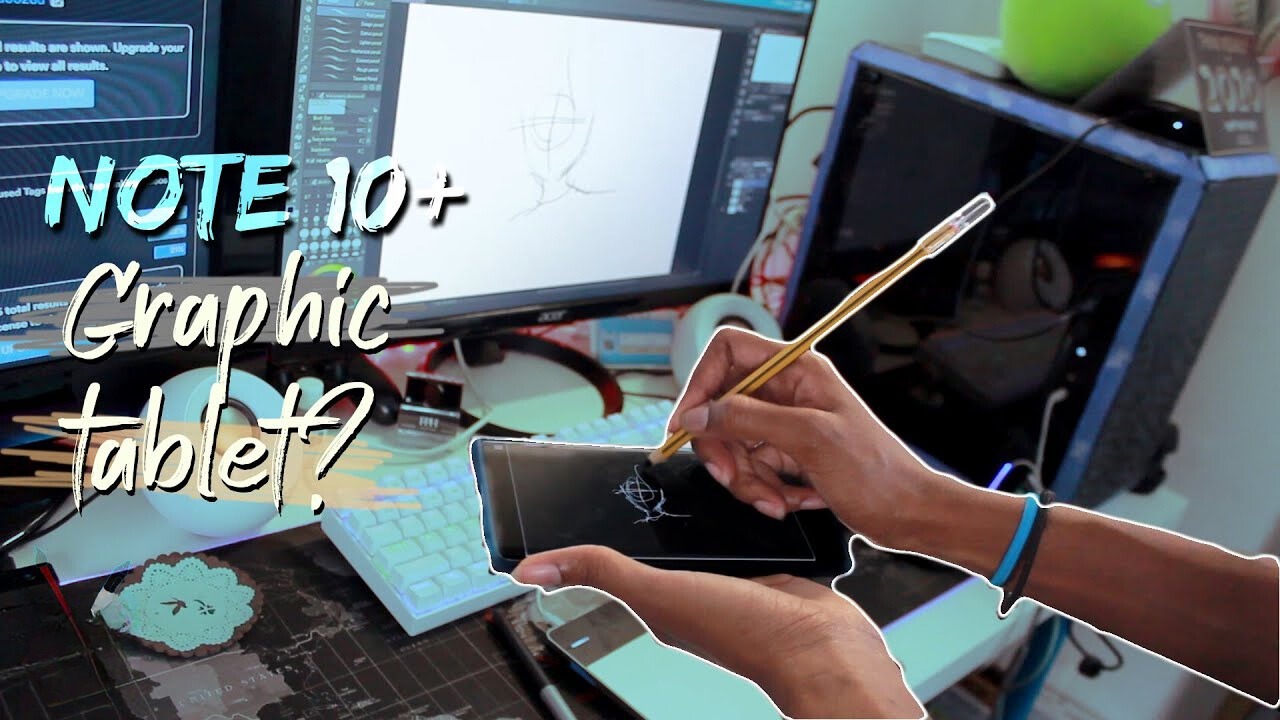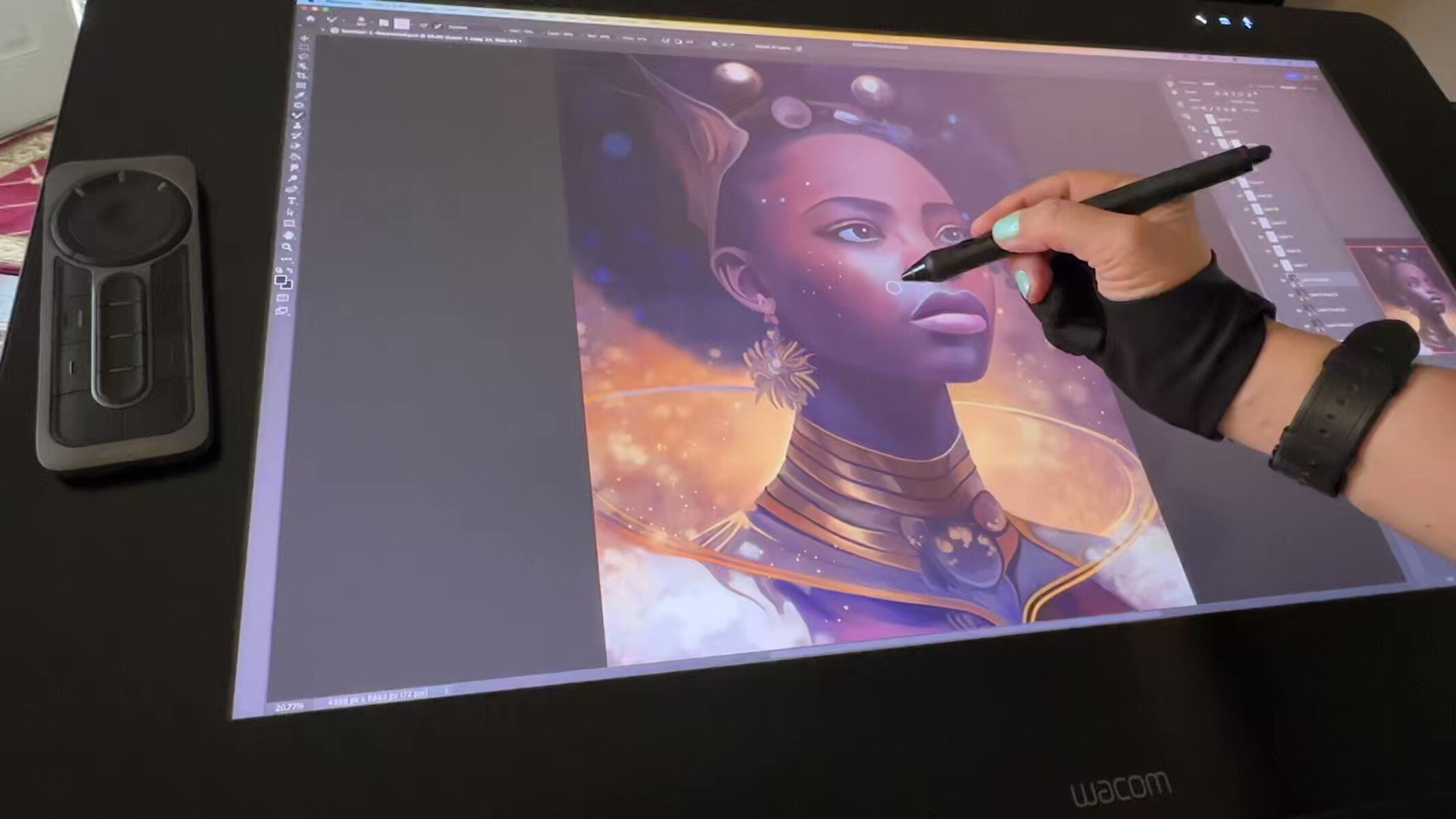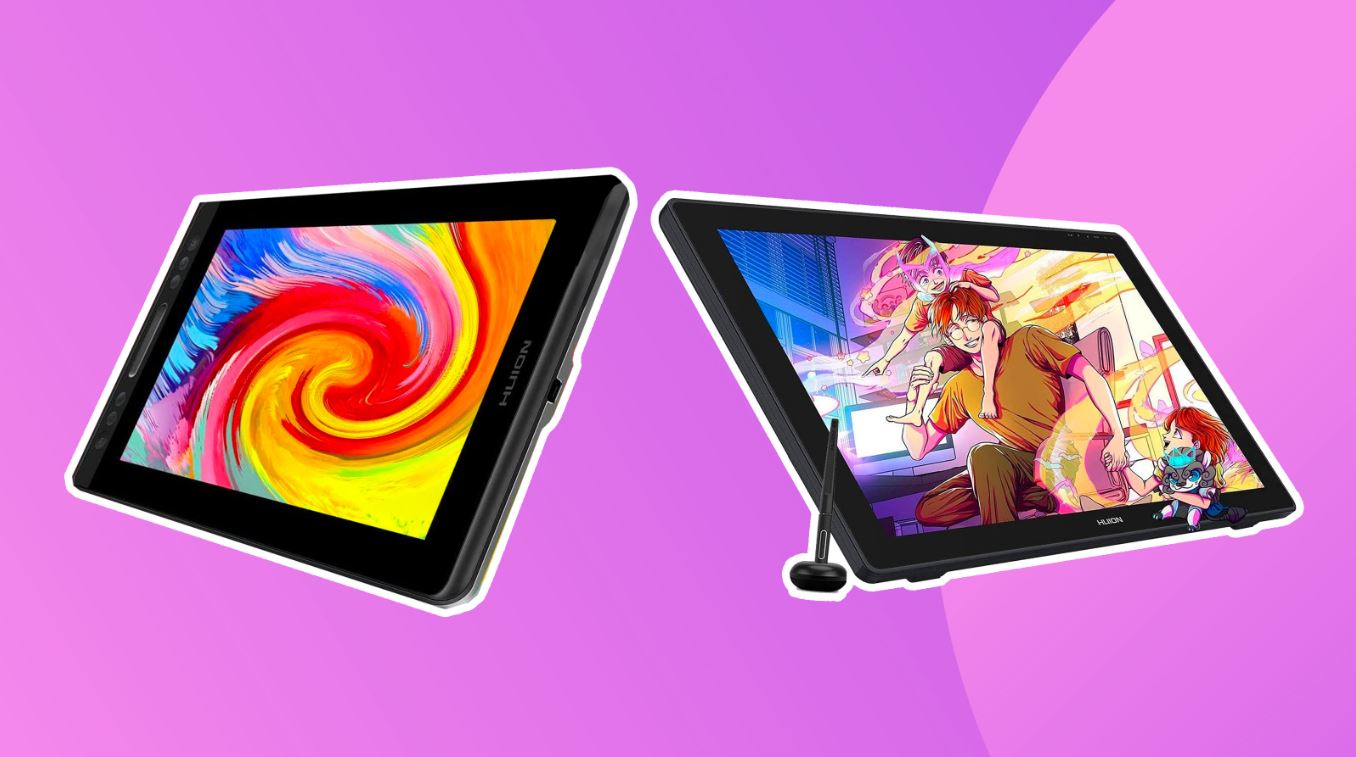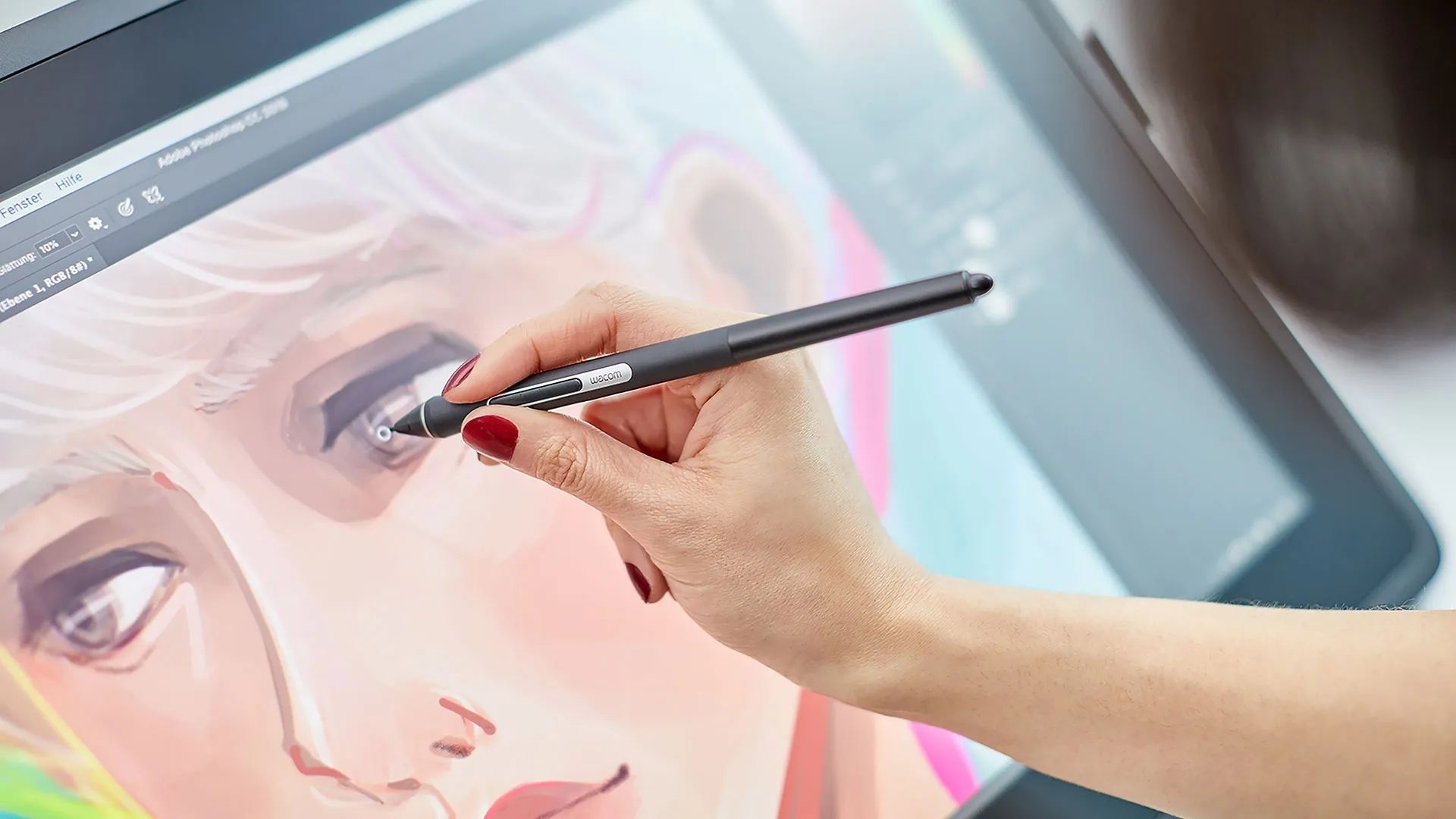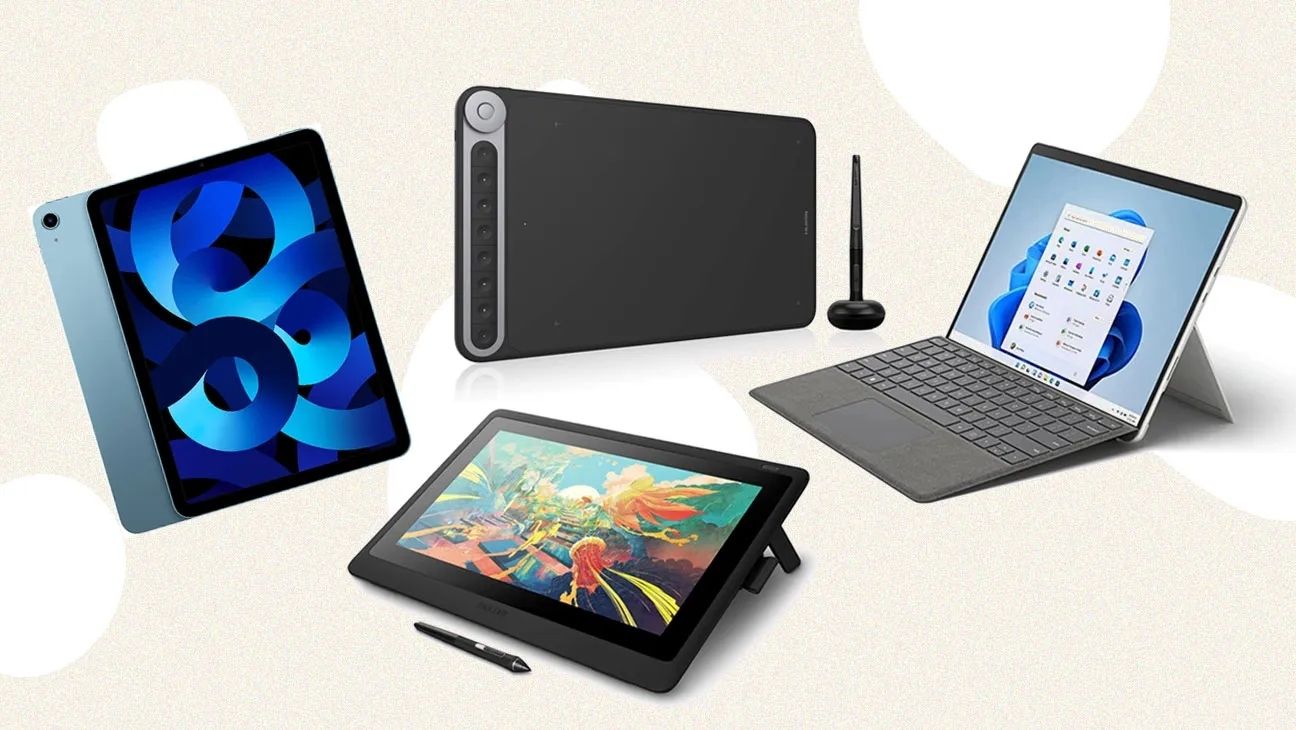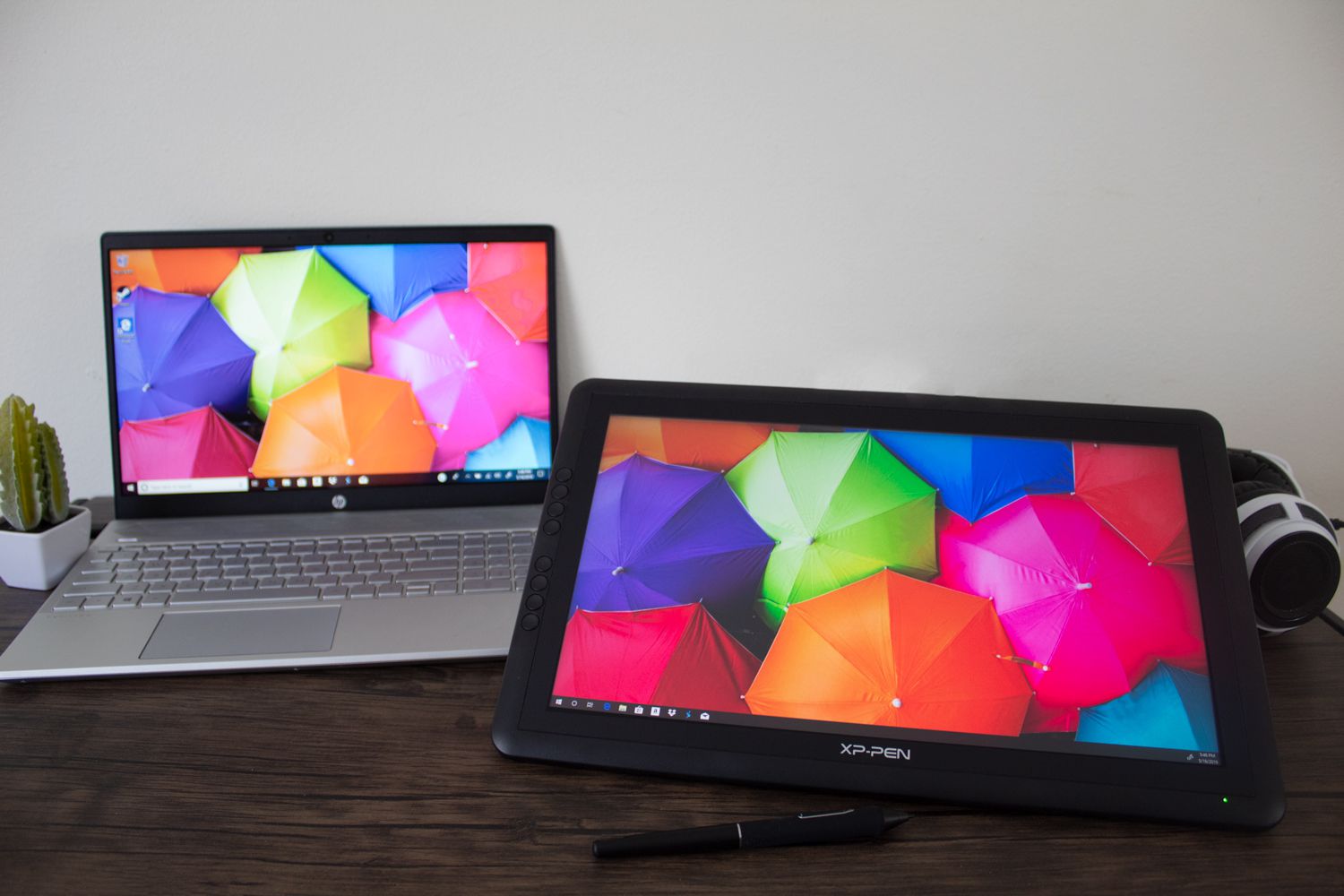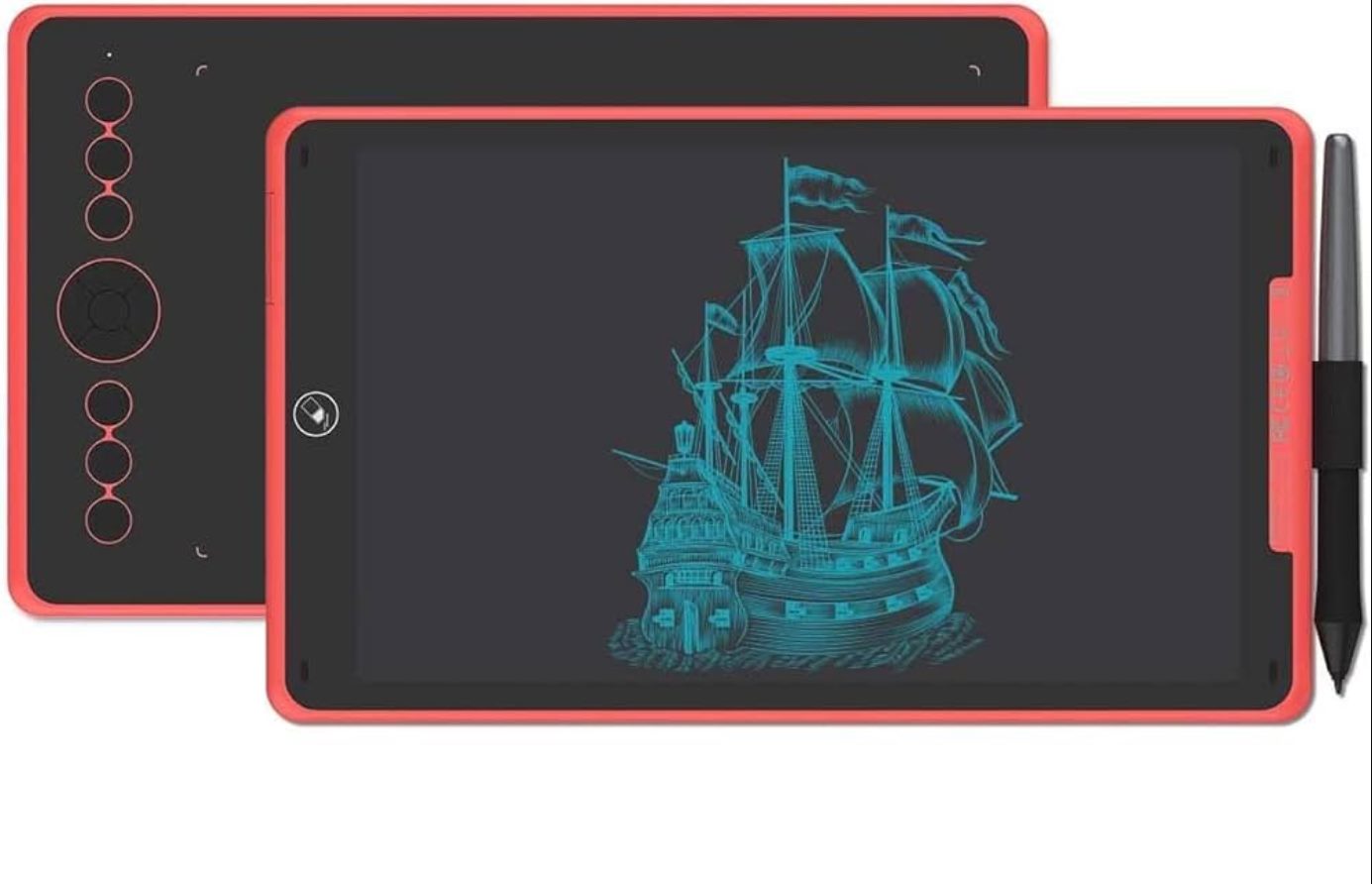Introduction
In today’s digital age, artists and designers often rely on drawing tablets to bring their creative visions to life on a computer. However, investing in a dedicated drawing tablet can be a significant expense. Fortunately, there is a cost-effective alternative – using your phone as a drawing tablet for your PC.
By leveraging the power and versatility of your smartphone, you can transform it into a functional drawing tablet that seamlessly integrates with your PC. This allows you to enjoy the benefits of precise and pressure-sensitive drawing without breaking the bank.
In this article, we will guide you through the process of using your phone as a drawing tablet for your PC. We will explore the necessary steps to connect your devices and optimize the settings to ensure a smooth drawing experience. With a few simple adjustments and the right app, you’ll be able to unleash your creativity and create stunning digital artwork using your phone.
Before we dive into the details, it’s important to highlight that while using your phone as a drawing tablet can be a great solution for casual artists and designers, it may not provide the same level of precision and functionality as a dedicated drawing tablet. However, it can still serve as a valuable tool for sketching, doodling, and exploring your creativity.
Now, let’s explore the steps to get started on using your phone as a drawing tablet for your PC. Whether you’re a hobbyist or a professional artist, this guide will help you make the most of your smartphone’s capabilities and enhance your digital artistry.
Choosing the Right App to Use
The first step in using your phone as a drawing tablet for your PC is selecting the right app. There are several options available, each offering different features and compatibility with various operating systems. Here are a few popular apps to consider:
- Adobe Photoshop Sketch: This app is part of the Adobe Creative Cloud suite and offers a range of drawing tools and brushes. It provides seamless integration with your Adobe Creative Cloud account, allowing you to easily access your artwork across multiple devices.
- Procreate Pocket: If you have an iPhone, Procreate Pocket is a highly recommended app. It offers a wide selection of brushes, layers, and other advanced tools, making it a favorite among professional digital artists.
- ibisPaint: With over 200 brushes, ibisPaint is a versatile drawing app suitable for both beginners and experienced artists. It also supports layering and offers various features like line stabilization and blending modes.
- ArtFlow: Available for Android devices, ArtFlow is a powerful drawing app that supports pressure sensitivity. It offers a range of brushes and tools, as well as the ability to export your artwork in various formats.
Before deciding on an app, consider your specific needs and the compatibility with your phone and PC. Take into account factors such as brush selection, layer support, pressure sensitivity, and file format compatibility. Additionally, read reviews and check online forums for recommendations from other artists who have used these apps.
It’s worth noting that some apps may require a paid subscription or offer in-app purchases for additional features. If you’re on a budget, look for free or trial versions that still offer a satisfactory drawing experience.
Once you have chosen the app that best suits your needs, it’s time to prepare your phone and PC for connection. In the next section, we will walk you through the necessary steps to get your devices ready for seamless integration.
Preparing Your Phone and PC for Connection
Before you can start using your phone as a drawing tablet for your PC, you need to ensure that both devices are properly prepared for the connection. Here’s what you need to do:
- Check device compatibility: Make sure that your phone and PC are compatible for connecting and using your phone as a drawing tablet. Typically, you’ll need a smartphone with a touchscreen and a PC running Windows or Mac operating system. Some apps may have specific requirements, so check the app’s documentation for compatibility information.
- Install the drawing app: On your phone, visit the respective app store (Google Play Store for Android or App Store for iOS) and search for the drawing app you have chosen. Download and install the app on your phone, following the instructions provided.
- Install the required software on your PC: Depending on the app you have chosen, you may need to install certain software or drivers on your PC to enable the connection between your phone and PC. Visit the app’s website or documentation to download and install any necessary software or drivers.
- Enable USB Debugging: To establish a connection between your phone and PC, you may need to enable USB Debugging mode on your phone. This option is typically found in the Developer Options section of your phone’s settings. If you don’t see Developer Options, go to the About Phone section and tap on the Build Number several times to unlock the Developer Options.
- Connect your phone to your PC: Once you have installed the necessary software and enabled USB Debugging, connect your phone to your PC using a USB cable. Your phone should prompt you to allow USB debugging or establish a connection. Follow the on-screen instructions to complete the connection setup.
It’s important to note that the steps may vary slightly depending on the app and operating system you are using. Refer to the specific app’s documentation for detailed instructions on preparing your phone and PC for connection.
With your phone and PC properly prepared for connection, you are now ready to establish the connection and adjust the necessary settings to ensure a smooth drawing experience. In the next section, we will guide you through the process of connecting your phone and PC using the drawing app you have chosen.
Connecting Your Phone and PC
Now that you have prepared your phone and PC for connection, it’s time to establish the connection between the two devices. The exact steps may vary depending on the drawing app you are using, but here is a general guide to help you connect your phone and PC:
- Launch the drawing app: Open the drawing app on your phone and ensure that it is running smoothly. Familiarize yourself with the app’s interface and options before proceeding.
- Enable connectivity options: In the drawing app, look for the connectivity or connection options. This could be labeled as “Connect to PC” or “PC Connection.” Tap on this option to initiate the connection process.
- Choose the connection method: Depending on the app, you will have different options for establishing the connection between your phone and PC. The most common methods include USB connection and wireless connection. Select the method that suits your preference and follow the on-screen instructions.
- Follow the setup wizard: Once you have chosen the connection method, you may be guided through a setup wizard that assists in establishing the connection. This wizard will provide step-by-step instructions on how to connect your phone to your PC, such as enabling certain settings or entering a code.
- Complete the connection process: After following the necessary steps, your phone should be successfully connected to your PC. You may now be able to see your phone’s screen on your PC or have your phone act as a digital drawing tablet within the app.
It’s important to follow the instructions provided by the drawing app you are using, as specific apps may have unique connection methods or additional settings to adjust. Some apps may require additional setup on the PC side, such as installing plugins or extensions, so ensure you are familiar with the app’s documentation.
Once you have successfully connected your phone and PC, you can move on to adjusting the settings within the app to optimize your drawing experience. In the next section, we will explore some key settings you should consider to ensure a smooth and enjoyable digital drawing experience.
Adjusting Settings for a Smooth Drawing Experience
After successfully connecting your phone and PC, it’s important to adjust the settings within the drawing app to ensure a smooth and enjoyable drawing experience. Here are some key settings you should consider:
- Pressure sensitivity: If your phone supports pressure sensitivity, make sure to enable this feature in the app’s settings. This allows for more precise and realistic control over your brush strokes, mimicking the pressure applied with a traditional drawing tool.
- Brush customization: Explore the brush settings within the app to customize the behavior and appearance of your brushes. Adjust parameters such as size, opacity, hardness, and flow to achieve the desired effect. Experiment with different brush presets and explore additional brush packs offered by the app.
- Layer management: Understanding how to effectively use and organize layers can greatly enhance your drawing workflow. Learn how to create, delete, merge, and adjust the opacity of layers within the drawing app. Utilize this feature to separate different elements of your artwork and make non-destructive changes.
- Zoom and pan: Familiarize yourself with the zoom and pan features within the app. These tools allow you to navigate and zoom in on specific areas of your artwork for finer details. Being able to pan across the canvas smoothly can significantly improve your drawing precision.
- Shortcut keys and gestures: Check if the app supports customizable shortcut keys or gestures. These can greatly speed up your workflow by allowing you to access commonly used tools or functions with a single press or gesture. Experiment with different configurations to find what works best for you.
- Backup and sync: Some drawing apps offer the option to backup and sync your artwork across multiple devices or cloud storage. Enable this feature if available to ensure that your creations are securely saved and accessible from various devices.
It’s worth noting that the specific settings and options may vary depending on the drawing app you are using. Take the time to explore the app’s settings menu and documentation to discover all the features and customization options available to you.
By adjusting these settings to fit your preferences, you can create a comfortable and efficient workflow that enhances your digital drawing experience. With your settings properly configured, you’re now ready to use your phone as a drawing tablet for your PC. In the next section, we will delve into how to effectively utilize your phone’s touchscreen capabilities to bring your digital artwork to life.
Using Your Phone as a Drawing Tablet
Now that you have connected your phone to your PC and adjusted the necessary settings, it’s time to start using your phone as a drawing tablet. Here are some tips to help you effectively utilize your phone’s touchscreen capabilities for digital drawing:
- Hold your phone securely: Find a comfortable and secure grip for your phone. Consider using a phone holder or stand to keep your phone in a stable position, especially if you plan on drawing for extended periods.
- Experiment with different drawing techniques: Explore the various drawing techniques that can be applied with a touchscreen. Use different pressure levels and gestures to achieve different effects, such as lighter or heavier strokes, blending, and shading.
- Utilize multi-touch gestures: Many drawing apps support multi-touch gestures, such as pinching to zoom in or out, rotating the canvas, or using two fingers for panning. Learn and practice these gestures to navigate your artwork more seamlessly.
- Try different styluses: If you prefer a more tactile feel while drawing, consider investing in a stylus that is compatible with your phone. Styluses can provide additional control and precision, enhancing your drawing experience.
- Take advantage of layers: Use layers to your advantage when creating complex artworks. Separate elements of your artwork onto different layers, allowing you to make adjustments or modifications without affecting the rest of your composition.
- Save and export your work: Regularly save your artwork to prevent any potential loss. Most drawing apps offer options to save your work in different file formats, such as JPEG or PNG. If the app supports it, consider saving your work in a lossless format like PSD to preserve all layers and editing capabilities.
- Practice and experiment: As with any artistic endeavor, practice is key. Take the time to explore different drawing techniques, experiment with new brushes and settings, and challenge yourself to try new subjects or styles. Embrace the versatility and portability of using your phone as a drawing tablet.
Remember, using your phone as a drawing tablet may have some limitations compared to dedicated drawing tablets. However, with practice and by leveraging the features and capabilities of your chosen drawing app, you can still create impressive digital artwork.
With these tips in mind, you’re now ready to unleash your creativity and embark on your digital art journey using your phone as a drawing tablet. In the next section, we will provide some additional tips and tricks to help you achieve even better drawing results.
Tips and Tricks for Better Drawing Results
To improve your drawing results when using your phone as a drawing tablet, consider incorporating the following tips and tricks into your digital art practice:
- Use reference images: When working on a specific subject or trying to achieve a certain style, reference images can greatly assist you. Import reference images into your drawing app and use them as a guide to ensure accurate proportions, perspective, and details.
- Experiment with different brushes: Don’t limit yourself to using just one or two brushes. Explore the variety of brushes available in your chosen drawing app and experiment with different textures, shapes, and styles. This can add depth and visual interest to your artwork.
- Take breaks and step back: Digital drawing can be intense and time-consuming. Remember to take regular breaks to rest your hand and eyes. Additionally, stepping back from your artwork periodically allows you to have a fresh perspective and notice any areas for improvement.
- Study color theory: Understanding color theory and how different colors interact with each other is crucial for creating visually pleasing artwork. Take the time to learn about color schemes, complementary colors, and the emotional impact of different hues.
- Utilize layers creatively: Besides separating elements, layers can be used creatively to add depth and effects to your artwork. Experiment with blending modes, opacity adjustments, and layer masks to create unique and compelling compositions.
- Practice gesture drawing: Gesture drawing is a technique that involves quickly capturing the essence and movement of a subject with loose, expressive strokes. This helps develop your observation skills and fluidity in capturing dynamic poses and gestures.
- Seek feedback and learn from others: Share your artwork with like-minded artists, join online communities, and seek constructive feedback. Learning from others and exchanging ideas can greatly enhance your skills and inspire new creative approaches.
- Regularly update your drawing app and device: Keep your drawing app and phone’s operating system up to date to ensure optimal performance and access to new features. Developers often release updates that address bugs, improve stability, and introduce new tools and functionality.
Remember, improvements come with time and practice. Don’t be discouraged if you’re not achieving the results you desire immediately. Embrace the learning process and allow yourself room to grow and experiment with your digital art.
By applying these tips and tricks to your digital art practice, you can enhance your drawing results and push the boundaries of what you can achieve using your phone as a drawing tablet. In the next section, we will address some common issues you may encounter and provide troubleshooting solutions to help you overcome them.
Troubleshooting Common Issues
While using your phone as a drawing tablet for your PC can be a convenient and cost-effective solution, you may encounter some common issues along the way. Here are troubleshooting tips for addressing these issues:
- Lag or latency: If you experience lag or latency between your phone and PC while drawing, try reducing the canvas resolution within the drawing app. Lowering the resolution can alleviate the demand on your phone’s resources and improve performance. Additionally, closing unnecessary background apps on your phone and PC can also help reduce lag.
- Missed or inaccurate pen strokes: If you notice that your pen strokes are missed or not accurately captured on the screen, ensure that you have installed the latest drivers and updates for both your phone and PC. Sometimes, updating to the latest version of the drawing app can also resolve this issue. Cleaning the screen of your phone and calibrating the stylus or touchscreen may also help improve accuracy.
- Connection issues: If you are experiencing difficulties establishing or maintaining the connection between your phone and PC, ensure that you have followed the connection instructions provided by the drawing app. Double-check that you have installed any necessary software or drivers on your PC. If using a wireless connection, ensure that both your phone and PC are connected to the same network and that there are no network connectivity issues. Trying a different USB cable or restarting both devices can also help resolve connection problems.
- App crashes or freezing: If the drawing app frequently crashes or freezes, make sure that you have sufficient storage space on your phone and PC. Clearing the cache of the drawing app or reinstalling the app can also help fix software-related issues. Updating to the latest version of the app, as well as your phone’s operating system, can provide bug fixes and improved stability.
- Pressure sensitivity not working: If your phone supports pressure sensitivity, but it is not working within the drawing app, ensure that you have enabled the pressure sensitivity option in the app’s settings. If the issue persists, check if there are any specific compatibility requirements or settings for pressure sensitivity in the app’s documentation. Updating the app and restarting your phone may also help resolve the issue.
If you encounter any other specific issues while using your phone as a drawing tablet, consult the app’s documentation, check for updates, and reach out to the support team or community forums for further assistance. Troubleshooting can require some trial and error, but with perseverance, you can overcome these obstacles and enjoy a seamless drawing experience.
In the following section, we will conclude our guide and summarize the key points discussed throughout the article.
Conclusion
Using your phone as a drawing tablet for your PC can be a practical and affordable option for unleashing your creativity and creating digital artwork. By selecting the right drawing app, preparing your phone and PC for connection, adjusting settings, and utilizing your phone’s touchscreen capabilities, you can achieve impressive drawing results.
Remember to choose a drawing app that suits your needs and preferences, considering factors such as compatibility, brush selection, and layer support. Take the time to prepare your phone and PC for connection by installing the necessary software, enabling USB debugging, and establishing a secure connection between the two devices.
To ensure a smooth drawing experience, adjust the settings of your chosen app to optimize pressure sensitivity, customize brushes, and effectively manage layers. Take advantage of multi-touch gestures, experiment with different styluses, and practice gesture drawing to enhance your artistic techniques.
Throughout your digital art journey, embrace the learning process and seek feedback from other artists. Familiarize yourself with color theory, utilize reference images, and continue to refine your skills through practice and experimentation. Regularly update your drawing app and device to access new features and improvements.
Should issues arise, troubleshoot them by reducing lag, addressing missed pen strokes, resolving connection problems, fixing app crashes, and ensuring the proper functioning of pressure sensitivity. Don’t hesitate to consult app documentation, update software, and seek assistance from support teams or community forums.
Using your phone as a drawing tablet opens up a world of creative possibilities. Embrace the flexibility, portability, and affordability it offers. With determination and dedication, you can create stunning digital artwork and unleash your artistic vision using the power of your phone.







